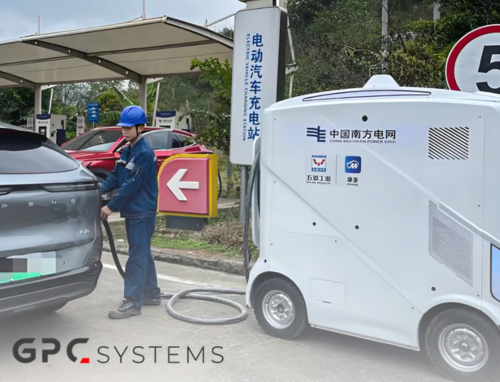
Soaring to New Heights: How 3D Scanning Drones are Transforming Warehouse Inventory Management
In an exciting development for the logistics industry, advanced 3D scanning drones are transforming warehouse inventory management, offering unprecedented efficiency and accuracy. This innovative technology is set to change how businesses track and manage their stock, ushering in a new era of smart warehousing.
The Rise of Warehouse Drones
Warehouse drones, also known as unmanned aerial vehicles (UAVs), are quickly becoming essential in modern inventory management systems. These sophisticated machines are equipped with high-resolution cameras, barcode scanners, and 3D mapping capabilities, allowing them to navigate complex warehouse environments with ease.The global market for warehouse robotics, including drones, is experiencing rapid growth. According to recent projections, this market is expected to reach a staggering £13.8 billion by 2026, with a compound annual growth rate of 12%. This surge in adoption is driven by the pressing need for more efficient and accurate inventory management solutions in an increasingly competitive global marketplace.
How 3D Scanning Drones Work
These advanced drones employ a combination of cutting-edge technologies to perform inventory checks with remarkable precision:
- 3D Mapping: Before beginning inventory scans, drones create detailed 3D maps of the warehouse, allowing them to navigate efficiently and avoid obstacles.
- Barcode Scanning: Equipped with high-resolution cameras and advanced image recognition software, drones can quickly scan and record barcodes on inventory items.
- RFID Technology: Some drones are fitted with RFID readers, enabling them to detect and track RFID-tagged items without a direct line of sight.
- AI and Machine Learning: These technologies enable drones to improve their performance over time, learning to identify patterns and anomalies in inventory data.
The Benefits of Drone-Powered Inventory Management
The adoption of 3D scanning drones for inventory management offers numerous advantages:
Increased Accuracy
Human error is a significant challenge in traditional inventory management. Drones boast an impressive accuracy rate of over 99%, significantly reducing discrepancies and improving overall inventory control.
Time and Cost Savings
Drone-based inventory checks can be completed in a fraction of the time required for manual counts. For instance, a drone can typically scan up to 400 barcodes per minute, dramatically outpacing human workers.
Enhanced Safety
By eliminating the need for workers to climb ladders or operate forklifts to reach high shelves, drones significantly reduce the risk of workplace accidents.
Real-Time Data
Drones provide real-time inventory data, allowing businesses to make informed decisions quickly and respond more effectively to market demands.
Case Studies: Drones in Action
Several major companies have already embraced drone technology for inventory management:
Princes Foods, a leading UK food and drink company, has integrated drones into their workflow to ensure more precise inventory tracking and enhance safety in their storage facilities.
PD Ports, one of the UK’s major port groups, uses drones for continuous cycle counting, maintaining accurate and real-time inventory data without disrupting daily operations.
Kite Packaging, a prominent packaging supplier, employs drone technology to perform rapid stock checks and manage large inventories more effectively, enabling faster response times to customer demands.
The Future of Warehouse Drones
As drone technology continues to evolve, we can expect to see even more advanced features and capabilities:
- Swarm Technology: Multiple drones working in coordination to complete inventory checks even faster.
- AI-Powered Predictive Analytics: Drones could not only count inventory but also predict future stock needs based on historical data and market trends.
- Integration with Robotics: Drones could work alongside ground-based robots, creating a fully automated warehouse ecosystem.
- Enhanced Autonomy: Future drones may be capable of self-charging and continuous operation, further reducing the need for human intervention.
Challenges and Considerations
Despite the numerous benefits, the adoption of warehouse drones does present some challenges:
- Initial Investment: The upfront cost of implementing a drone-based inventory system can be significant.
- Regulatory Compliance: Companies must navigate complex regulations surrounding drone use in commercial settings.
- Staff Training: Warehouse staff will need training to work alongside and maintain drone systems.
- Data Security: As with any connected technology, ensuring the security of inventory data collected by drones is crucial.
Conclusion
The introduction of 3D scanning drones in warehouse inventory management marks an important step forward in logistics technology. By offering unparalleled accuracy, efficiency, and safety, these advanced solutions are set to change how businesses manage their stock.As this technology continues to develop and become more accessible, widespread adoption across the logistics industry is likely. Companies that embrace these innovations early stand to gain a significant competitive advantage in an increasingly fast-paced market.The future of warehouse management is here, with 3D scanning drones paving the way toward smarter, more efficient logistics operations. As businesses look for ways to optimise their supply chains and improve operational efficiency, these cutting-edge tools will undoubtedly play a pivotal role in shaping the landscape of modern warehousing.
Check in weekly here at GPC for the latest blogs in logistics, AI, Tech & 3D.




